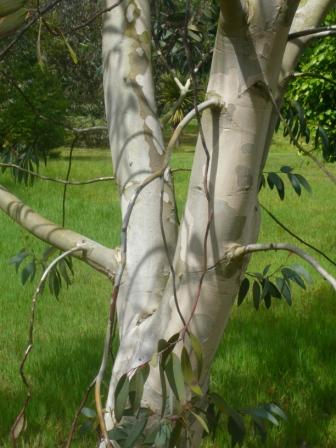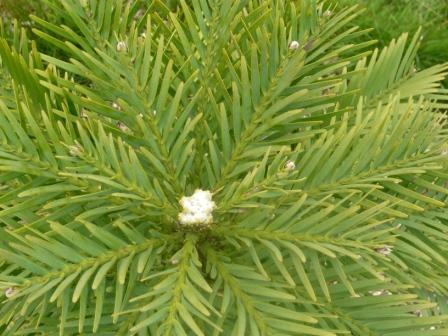Australian Plants & Trees
Gondwanaland
This white barked tree is an Australian Eucalyptus debeuvillei’ Snow Gum’. It is planted in the special southern hemisphere enclosure at Marks Hall in Essex as part of the Arboretum. Gondwanaland was the ancient name of a super continent that split apart to form Australia, Antartica, New Zealand and South Africa (although I don’t know who was around to call it that).
In the planting there are a large number of as yet quite young Monkey Puzzle trees Araucaria araucana but that adds to the attraction of this fine garden. It is good to see new planting that will be there when the 500 year old Oaks reach their millennium. One of those plantings will be the the Wollemi Pine one of the world’s oldest and rarest plants dating back to the time of the dinosaurs. With less than 100 adult trees known to exist in the wild, the Wollemi Pine is now the focus of extensive research to safeguard its survival.It is far sighted to plant several of these trees as part of the Southern hemisphere garden which will itself develop as the trees mature and provide shelter and (globally warmed) conditions.
Marks Hall Gardens & Arboretum
I have mentioned the great old Oak trees in over 100 acres of gardens and arboretum but there are lots of other interesting features to this visitor attraction. Foremost for me was the peace and quiet even on a late spring weekend which is due to the large area with something of interest in most sections. At least 14 specific attractions were marked on the guide map including the lakes allegedly dug by Cromwell’s troops in 1648. Near the lower lake is the original nuttery containing Cob nut trees and spring flowers.
The walled garden had some well advanced Iris and Rosemary was in bloom giving a cool blue feel to complement the old red brick. I missed seeing the Taxodium Swamp inspired by the Everglades but I will leave that for another visit. There is no old hall to visit now but a converted barn provided a refueling stop with good soup and vitals.
http://www.markshall.org.uk/ says ‘The Wollemi Pine produces three main types of foliage depending on its age and position on the tree. New Juvenile frond-like foliage is apple-green and changes to a blue-green colour as the plant grows. Mature foliage is much more Jurassic like, featuring two rows of leaves on the branches, not unlike the spines on a Stegosaur’s back. In the colder months the foliage has a warm, bronze appearance.’

